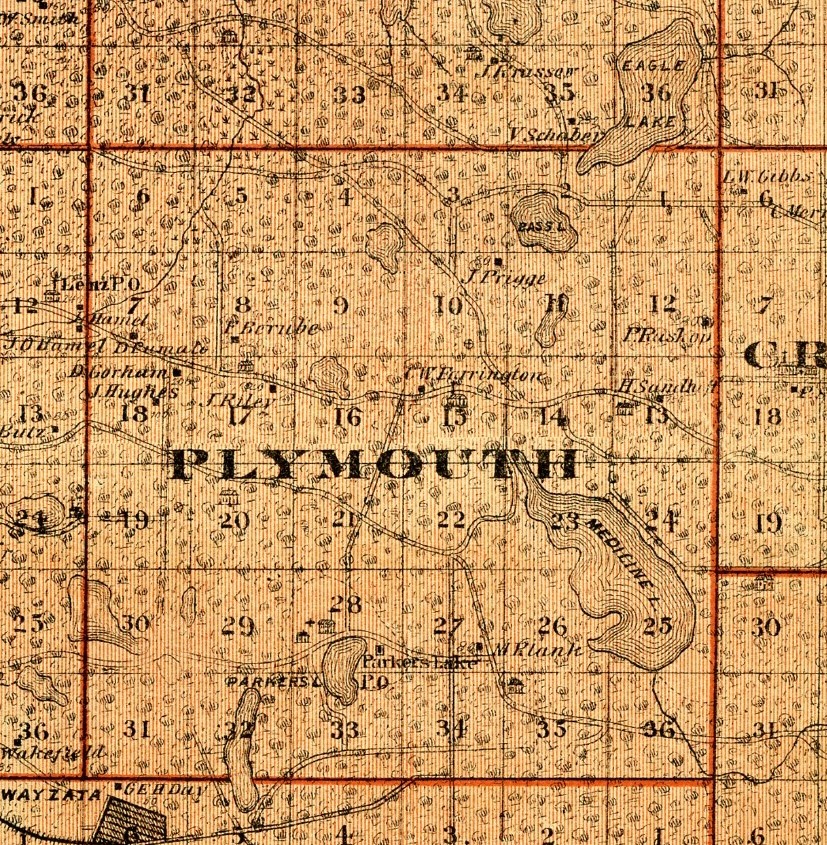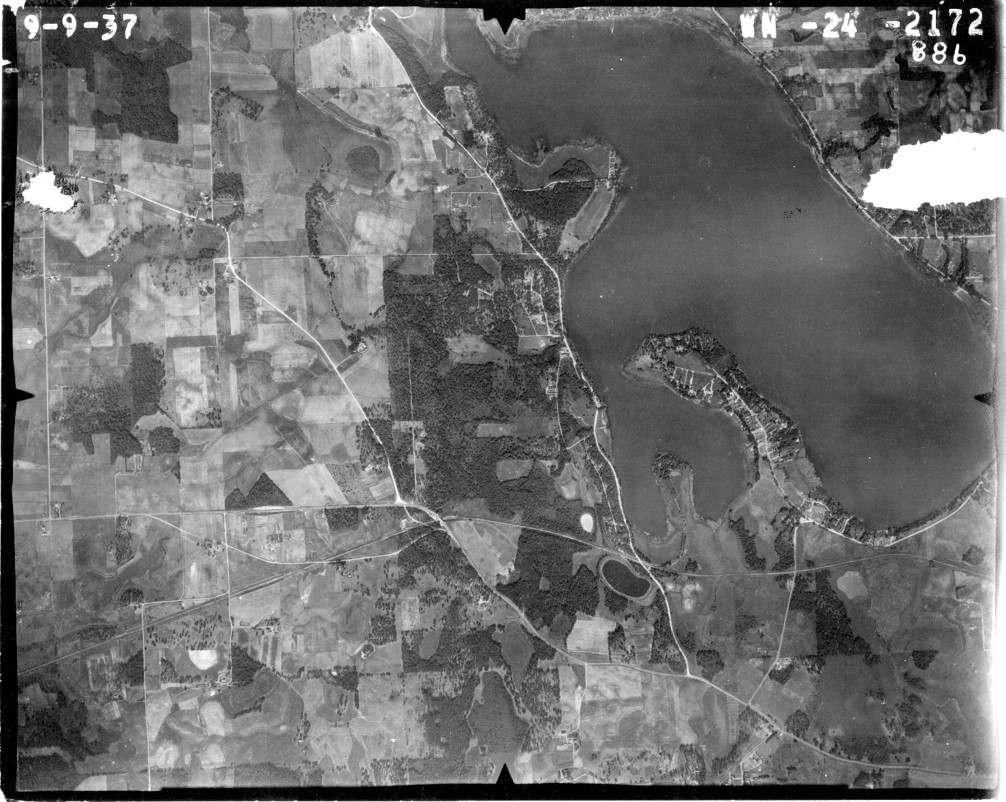A Story of Many Plymouths, Pt. 2: When Plymouth was Medicine Lake

In our journey to commemorate the naming of Plymouth, it is now time to re-center on our very own Plymouth, Minnesota. Returning to Upham’s text, the entry reads:
Plymouth, first settled in October, 1853, organized May 11, 1858, took the name of its village previously platted on Parker’s lake, in 1856; but the village was only of short duration, in contrast with the township name, which, however, some of the settlers at first wished to change to Medicine Lake. Like all the many Plymouths of the United States, it commemorates the city of Plymouth at the mouth of the River Plym in Devonshire, England, whence the Pilgrims in the Mayflower sailed in 1620 to the site of Plymouth, Mass., landed there on a boulder of world renown, called Plymouth Rock.
This somewhat confusing reference to the village’s name versus its later township name is explored further in two previous blogposts on the naming of Medicine Lake. However, for our purposes here, the important point remains that, for a time, the area we now call “Plymouth” was historically first considered under the name “Medicine Lake.”

As those familiar with Plymouth will know, Medicine Lake is a major body of freshwater in the east side of Plymouth. As the second largest lake in Hennepin County, it is fed by Plymouth Creek as part of the Basset Creek watershed. It is believed the name “Medicine Lake” is a reference to the Dakota “Mde/Bde Wakan,” generally translated as “Wonderful Lake” or “Spirit Lake.” This is also the name given the lake known as Mille Lacs (from the French meaning “a thousand lakes”), a site of sacred importance featured in Dakota creation stories. It is this relation to something sacred that is believed to bridge the linguistic ties between “Medicine” (in Dakota “pezuta”) and “Spirit” (“wakan”), though historical texts are not clear regarding its direct connection to the Plymouth lake.
History of Hennepin County by Rev. Edward D. Neill (1881) discusses that the first organizing meetings were held in 1858 to discuss setting up boundaries of the township under the name of “Plymouth.” However, the text goes on to say:
…the first meeting was called under that name [Plymouth], which produced a great deal of dissatisfaction on the part of some of the voters, and another meeting was called for June 21, 1858, which met at the hotel kept by C. W. Farrington. After considerable discussion a vote was taken, which resulted in favor of Medicine Lake, for the name of the town.
A subsequent meeting occurred under the name of Medicine Lake in April 1859, but the following year the meeting was again held under the name Plymouth. The text notes:
The county officials never recognized the name of Medicine Lake, and the name reverted back to that given by the county board. The name was taken from a village called Plymouth, laid out on the north and west shores of Parker’s Lake, in 1856.
As such, history books leave us in suspense regarding why the name fluctuated. What were the connections to the name Plymouth that were unfavorable to early settlers? What possible conversations led to the name shifting away from Medicine Lake? These are currently unanswered questions, but it reminds us of the imbedded significance in a name. Plymouth has a decided linguistic association with European heritage, and with its use, the township became a step removed from its indigenous place name, a theme we will explore in our next post.